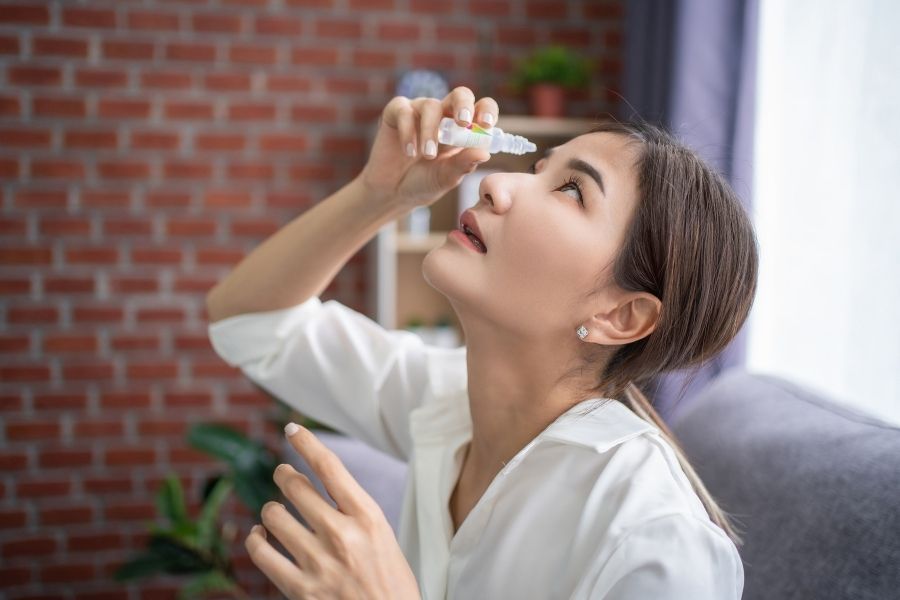
Dry eye happens when the tears are unable to keep the surface of the eye wet. People with dry eyes may have white or mildly red eye, experience an itchy, sandy, gritty feeling or a feeling that something is in the eye. It may often present with too much tearing at first.
Causes of dry eyes:
- Aging
- Defects in the eyelids or cornea
- Certain eye surgery procedures
- Medical conditions like rheumatoid arthritis (a type of disease where the immune system attacks your own tissues)
- Certain medicines such as antihistamines (used for allergies and runny nose)
The condition may be worsened by allergens (something that causes an allergic reaction) or environmental conditions such as dry, dusty places, or air conditioning systems.
What you can do
Dry eye should be treated to reduce symptoms and to prevent further damage to the eye.
Eye lubricants such as artificial tear products may be used to relieve the symptoms. Artificial tear products vary in their thickness, contents and presence of preservatives. Most tear supplements contain similar contents to human tears and help to ensure that the eye surface stays wet.
Examples of lubricants used in eye drops:
- Substituted cellulose ethers (Carboxymethylcellulose, Hydroxypropyl methylcellulose)
- Polyvinyl alcohol
- Water soluble polyols (glycerin, propylene and polyethylene glycol)
- Dextran 70, Carbomer
- Lanolin, mineral oil, paraffin, HP Guar
Increasing the thickness of the eye drop products allow the tears to stay on the eye for a longer time and provide a longer effect. However, the thicker products are more likely to cause blurring of vision. Thus, thicker products such as eye ointments are usually used at bedtime or in people with very bad dry eye symptoms.
Why are preservatives added to eye drops?
Preservatives are added to prevent bacteria from growing. Benzalkonium chloride is the most commonly used preservative. Long term use of products containing benzalkonium chloride may harm the eyes. Newer preservatives, such as sodium perborate and Purite, have a decreased risk of side effects.
In general, preservative-free eye drops are recommended for people who need to use eye drops more than four times a day.
What you can do to relieve dry eyes
- Allow your eyes to rest when doing activities that need you to use your eyes for long periods of time.
- Take frequent breaks by closing your eyes for a few minutes.
- Blinking repeatedly for a few seconds can help spread tears in the eyes.
- Use a humidifier in air-conditioned rooms to add moisture to the room so the surrounding air will not be too dry.
- Prevent air from blowing directly at your eyes by lowering fan speeds and by facing the fans or hair dryers away from your eyes.
- Use an eye mask to provide gentle warm compression for mild dry eyes.
When to see doctor
- If your eyes are swollen or painful
- If there is pus coming out of your eye
- If you have changes in your vision
- If redness and irritation in your eye does not go away
- If you have other symptoms such as dry mouth
- If only one eye is affected
- If you feel something is present in your eye even after washing it out
Updated in Nov 2018
This article does not take the place of talking to your doctor or pharmacist. People with special health needs such as babies, children below 12 year old, elderly and pregnant ladies should see a doctor instead of self-treatment. Always read the instructions and warnings on the package before taking any medicine.
.png)



















































